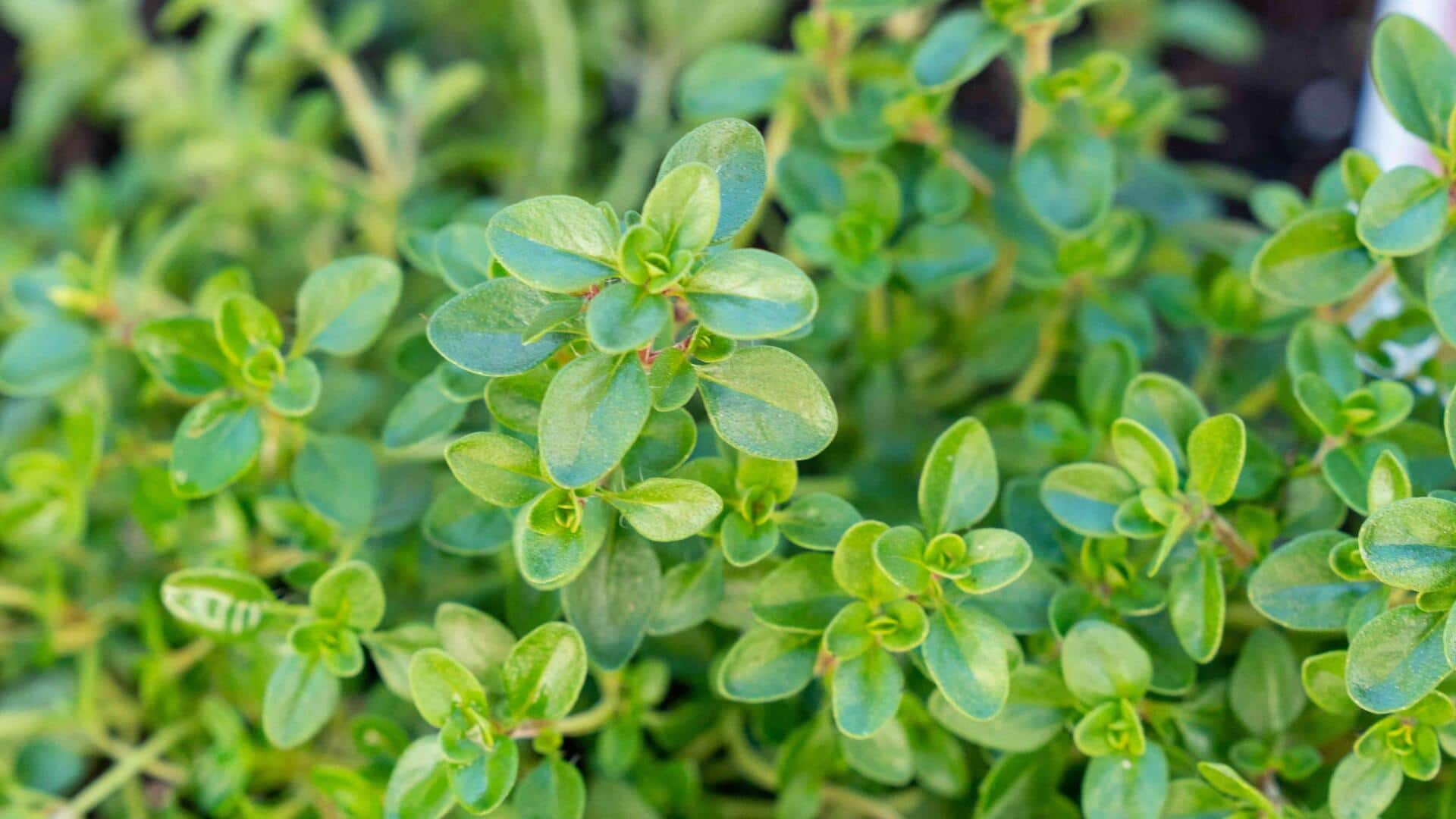
How to grow thyme at home
What's the story
Growing thyme in a balcony pot is one of the easiest ways to enjoy fresh herbs at home. This hardy herb thrives with minimal care, making it the ideal choice for urban gardeners. With the right conditions and a few simple steps, you can grow thyme successfully even in the smallest of spaces. Here's a guide on how to grow thyme effortlessly.
Pot selection
Choosing the right pot
Choosing the right pot is essential for growing thyme. Choose a container that is a minimum of six inches deep with drainage holes to avoid waterlogging. Clay pots are the best as they allow excess moisture to evaporate, ensuring the soil remains well-drained. Check the pot size allows growth without overcrowding, which can inhibit root development and affect plant health.
Soil needs
Soil and planting requirements
Thyme likes well-draining soil with a neutral pH. A combination of regular potting soil and sand or perlite does the trick to ensure good drainage. When planting seeds or seedlings, cover them lightly with soil and water gently but thoroughly. Don't compact the soil too much as that can restrict root growth and reduce aeration.
Watering tips
Watering techniques
Proper watering is critical for thriving thyme plants. Water when the top inch of soil feels dry but don't overdo it, as thyme doesn't do well in soggy conditions. During hot weather or if your balcony gets direct sunlight, check moisture levels more often to prevent them from drying out completely.
Light requirements
Sunlight exposure
Thyme needs plenty of sunlight to grow well; aim for at least six hours of direct sunlight a day if possible on your balcony space. Location-wise orientation matters here too! If you don't have much natural light, try grow lights indoors supplementarily, especially during winter months when daylight hours decrease significantly. This impacts plant growth negatively, potentially leading towards stunted development issues from a long-term, overall health-wise perspective.